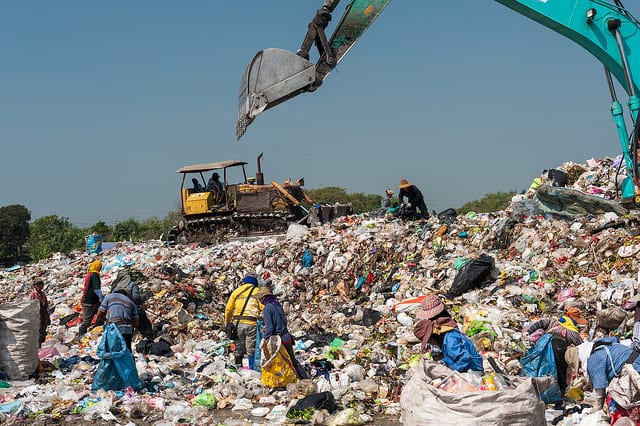Project title: Waste Transport Model
Industry partner: Sustainability Victoria (SV)
Sustainability Victoria supports Victorians to be more sustainable in their everyday life; in homes and in jobs, schools and communities and in the systems and infrastructure that support a thriving Victorian economy and lifestyle. SV aims to improve the way Victoria manages its resources and help communities to take action on climate change. SV provide expert advice and guidance in energy, materials and waste. SV conducts research and demonstrate what is possible and inspires people to make sustainable change above and beyond legal requirements.
Background:
SV would like to engage RMIT students in a project to visualize the data on plastic from ABS input/input tables. The data may include:
- which industries consume the most plastic?
- which industries generate the most plastic?
- what type of plastic is consumed / generated PET, HDPE, etc.?
- what are the main products generated from plastic?
- what is the cost by material type of plastic for each industry?
The visualization (preferably in Power BI) should show the different scenarios and show where the real impacts might be.
Project aim/expected outcomes:
The project aims to highlight plastic as a material to see where the government might be able to have an impact in encouraging recycled plastic content in industry and what the costs of recycled material would be compared to virgin resins.
DELIVERABLES:
| No. | Main Deliverable | Description | Estimated Timing |
| 1 | Project Plan | Students discuss with SV and RMIT academic supervisors about a detailed project plan. | March 2020 |
| 2 | Project Implementation | Students review data and work on the possibilities for visualization. | April-June 2019 |
| 3 | Progress Report | Students report progress (written report or presentation) | May 2019 |
| 4 | Final report and presentation | Report/present on project outcomes | June 2019 |
Work method:
- Students are required to attend the kick-off meeting with SV to fully understand the requirements from SV. A returned project brief together with a project plan is required after this meeting.
- Students then work on their own and/or under the supervision/instructions of the supervisor to meet the agreed timeline.
- SV will appoint a contact person who helps students with data access or any question/queries regarding the requirements of the project.
Eligibility:
- Analytics or Data Science students
- Computer Science students
Appendix 1: ABS Input/Output Table
The release is ABS catalogue 5215.0.55.001 and the latest release is available on the ABS website at
https://www.abs.gov.au/AUSSTATS/abs@.nsf/Lookup/5215.0.55.001Main+Features12016-17
| 18210010 | Synthetic rubber | 1803 |
| 18210020 | Polystyrene | 1803 |
| 18210030 | Polyethylene | 1803 |
| 18210040 | Polyvinyl chloride | 1803 |
| 18210050 | Polypropylene | 1803 |
| 18210060 | Polyvinyl acetate and synthetic resins nec (excl adhesives) in primary forms, not mixed/compounded (excl regranulated) | 1803 |
| 18210070 | Rosin and resin acids and derivatives thereof; rosin spirit and rosin oils; run gums | 1803 |
| 18210080 | Plastics in primary forms, mixed/compounded with other substances; regranulated, single thermoplastic scrap material | 1803 |
| 18290010 | Cellulose fibre or filament | 1803 |
| 18290020 | Non-cellulose fibre or filament | 1803 |
| 18290030 | Synthetic fibre or filament nec | 1803 |
| 18290040 | Basic polymers nec | 1803 |

